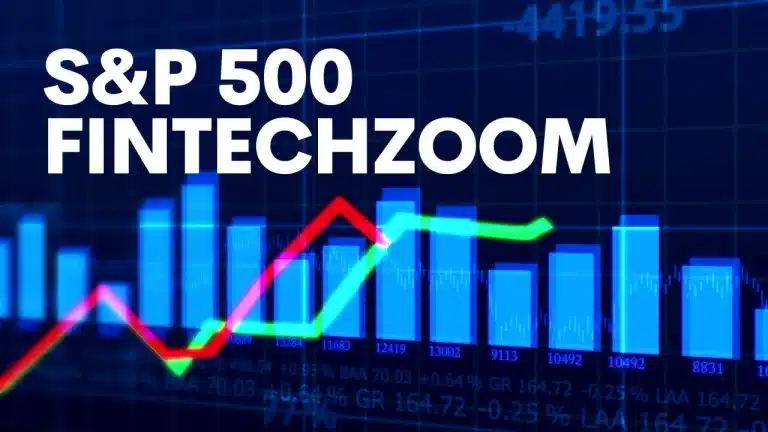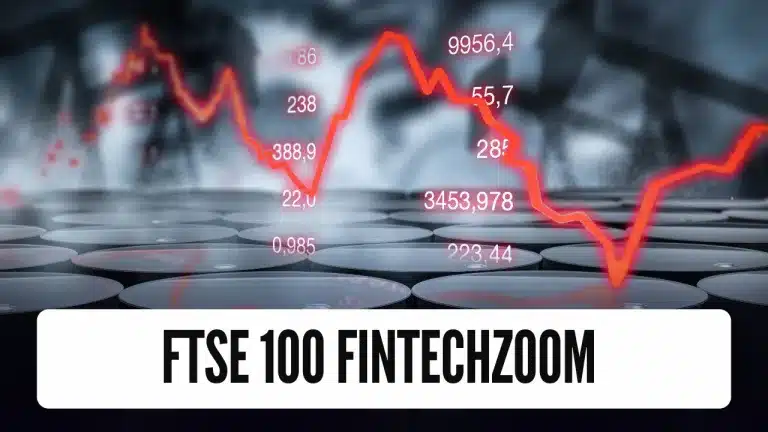Fintechzoom Disney (DIS) Stock: Performance Analysis & Target
In this article on Fintechzoom, we will take a comprehensive look at Disney stock, its business operations, financial metrics, competitive landscape, and future prospects to help investors make informed decisions about whether to include Disney stock in their portfolios. As a publicly traded company, Disney’s stock performance is closely watched by investors, analysts, and market participants.
Analyzing Disney stock is crucial for both novice and experienced investors who want to gain exposure to the media and entertainment industry. By understanding the key drivers of Disney’s success, as well as the challenges and opportunities it faces, investors can assess whether the company’s stock aligns with their investment goals and risk tolerance.
Disney’s Business and Revenue Streams
Disney’s vast empire spans across various business segments, each contributing to the company’s overall revenue and growth. The Media Networks segment, which includes popular television channels such as ESPN, Disney Channel, and ABC, generates substantial revenue through advertising and affiliate fees. ESPN, in particular, has been a consistent cash cow for Disney, leveraging its strong brand and exclusive sports content to attract viewers and command premium advertising rates. The Disney Channel and ABC also offer a mix of original programming and syndicated content that appeals to a wide range of audiences.
The Parks, Experiences and Products segment is another significant revenue driver for Disney. This segment encompasses the company’s iconic theme parks, resorts, cruise lines, and merchandise sales. Disney’s theme parks, such as Disneyland and Walt Disney World, are renowned for their immersive experiences, attention to detail, and family-friendly attractions. These parks attract millions of visitors each year, generating revenue through ticket sales, food and beverage purchases, and merchandise sales. Disney’s resorts and cruise lines also offer unique vacation experiences that cater to a wide range of budgets and preferences.
In addition, if you love Disney too, try giving yourself a special souvenir of your Disney trip. Custom Lapel Pins designed with these elements seem good. Design your favorite colors and patterns, and have your design customized by a professional pin maker. Whether you wear it on your chest or backpack, it’s a great accessory; it’s also a keepsake with your creation.

The Studio Entertainment segment is responsible for the production and distribution of movies, television shows, and music. Disney’s film studio, which includes iconic brands such as Walt Disney Pictures, Pixar, Marvel, and Lucasfilm, has consistently delivered blockbuster hits that have broken box office records and generated significant revenue through ticket sales and merchandise licensing. Disney’s television production arm also creates popular shows for its own channels and for distribution on other networks.
Finally, the Direct-to-Consumer & International segment focuses on Disney’s streaming services, such as Disney+, Hulu, and ESPN+. As consumers increasingly shift towards on-demand and streaming content, Disney has invested heavily in this segment to capture market share and compete with established players like Netflix and Amazon Prime Video. Disney+, in particular, has seen rapid subscriber growth since its launch, thanks to its extensive library of classic and original content, as well as its competitive pricing.
Disney Historical Stock Performance on Fintechzoom
Disney’s stock (NYSE:DIS) has been a staple of many investor portfolios and stock indexes like Dow Jones and S&P 500, thanks to the company’s consistent growth and strong financial performance. Over the long term, Disney’s stock price has trended upwards, reflecting the company’s ability to adapt to changing market conditions and capitalize on new opportunities. However, like any stock, Disney has experienced its fair share of volatility and has been impacted by various events and market forces.
One of the most significant events in Disney’s recent history was its acquisition of 21st Century Fox in 2019. This massive $71 billion deal significantly expanded Disney’s content library and gave it a controlling stake in Hulu, strengthening its position in the streaming market. The acquisition also helped diversify Disney’s revenue streams and provided new opportunities for synergies and cost savings. However, the integration of Fox’s assets also presented challenges, such as managing a larger and more complex organization and dealing with increased debt levels.
Another major event that impacted Disney’s stock price was the COVID-19 pandemic. The global health crisis forced Disney to close its theme parks and resorts, delay movie releases, and suspend cruise line operations, resulting in significant revenue losses. Disney’s stock price plummeted in the early stages of the pandemic as investors worried about the long-term impact on the company’s business. However, Disney’s strong brand, loyal customer base, and diversified business model helped it weather the storm and recover relatively quickly.
Compared to broader market indices, such as the S&P 500, Disney’s stock has generally outperformed over the long term. This outperformance can be attributed to Disney’s strong competitive position, its ability to generate consistent cash flows, and its track record of successful acquisitions and investments. However, in recent years, Disney’s stock has faced increased competition from other media and entertainment companies, such as Netflix and Amazon, which have disrupted traditional business models and captured market share in the streaming space.
Recent Financial Results and Key Metrics
Disney’s recent financial results provide insight into the company’s current performance and future prospects. In the most recent fiscal year, Disney reported revenue of $65.4 billion, a decrease of 6% from the previous year, primarily due to the impact of the COVID-19 pandemic on its Parks, Experiences and Products segment. However, the company’s Direct-to-Consumer & International segment saw significant growth, with revenue increasing 81% year-over-year, driven by strong subscriber growth for Disney+.
Disney+ has been a key focus for the company in recent years, as it looks to capture a larger share of the growing streaming market. As of the end of the most recent quarter, Disney+ had 94.9 million subscribers, up from 26.5 million in the prior-year quarter. This rapid growth has been fueled by a combination of strong content offerings, competitive pricing, and bundling with other Disney streaming services, such as Hulu and ESPN+.
Despite the challenges posed by the pandemic, Disney has continued to invest in new content production and release pipelines. The company has a robust slate of upcoming movies and television shows across its various studios and brands, including highly anticipated releases from Marvel, Star Wars, and Pixar. These investments in content are critical for driving subscriber growth and engagement on Disney’s streaming platforms, as well as generating revenue through traditional distribution channels.
Fintechzoom Analyst Ratings and Price Targets on Disney Stock
Fintechzoom analysts closely follow Disney stock and provide regular updates on their ratings and price targets for the company. These analyst opinions can provide valuable insights into the company’s current performance and future prospects, as well as help investors gauge market sentiment towards the stock.
As of the most recent analyst consensus, Disney stock has a “Buy” rating, with a majority of analysts recommending the stock as a strong investment opportunity. This bullish sentiment is driven by several factors, including Disney’s strong brand and content library, its growing streaming business, and its ability to generate significant cash flows from multiple business segments.
However, analyst opinions on Disney stock are not unanimous, and there have been some recent upgrades and downgrades based on various factors. For example, some analysts have raised concerns about the long-term impact of the COVID-19 pandemic on Disney’s Parks and Studio Entertainment segments, as well as the intense competition in the streaming market. Others have highlighted the company’s strong balance sheet and ability to invest in growth initiatives, even in challenging market conditions.
Analyst price targets for Disney stock vary based on their assumptions and valuation models, but the consensus price target suggests significant upside potential from current levels. However, it’s important to note that analyst price targets are not guarantees of future performance and are subject to change based on new information and market conditions.
Risks and Challenges
Despite its strong brand and diversified business model, Disney faces several risks and challenges that could impact its stock performance in the future. One of the most significant risks is the potential slowdown in subscriber growth for its streaming services, particularly Disney+. As the streaming market becomes increasingly crowded and competitive, Disney may face challenges in attracting and retaining subscribers, particularly as it exhausts its library of classic content and faces pressure to invest in expensive original productions.
Another major risk for Disney is the ongoing impact of the COVID-19 pandemic on its Parks, Experiences and Products segment. While the company has reopened many of its theme parks and resorts, attendance levels and revenue remain below pre-pandemic levels due to capacity restrictions, travel limitations, and consumer health concerns. The longer-term impact of the pandemic on consumer behavior and preferences for travel and entertainment experiences remains uncertain and could continue to weigh on Disney’s financial performance.
In addition to these segment-specific risks, Disney also faces broader challenges related to its content production and distribution strategies. The company’s success depends on its ability to consistently create and acquire compelling content that resonates with audiences across multiple platforms and markets. However, the cost of producing and acquiring high-quality content continues to rise, putting pressure on Disney’s margins and profitability. The company also faces risks related to changing consumer preferences and the potential for increased regulation of its content and distribution practices.
Finally, Disney’s size and scale as a global media and entertainment conglomerate also expose it to various reputational and regulatory risks. The company’s operations and content are subject to intense scrutiny from consumers, advocacy groups, and policymakers around the world, and any missteps or controversies could damage its brand and reputation. Disney also faces risks related to data privacy, cybersecurity, and intellectual property protection, which could result in legal liabilities and financial losses.
Opportunities and Growth Prospects
Despite the risks and challenges outlined above, Disney also has several significant opportunities and growth prospects that could drive its stock performance in the future. One of the most promising opportunities is the international expansion of its streaming services, particularly Disney+ and Hulu. As the company launches these services in new markets around the world, it has the potential to tap into large and growing audiences with a strong appetite for high-quality entertainment content.
Another major opportunity for Disney is the revival of its Parks, Experiences and Products segment in the post-pandemic era. As vaccination rates increase and travel restrictions ease, Disney’s theme parks and resorts could see a significant rebound in attendance and revenue. The company has also used the downtime during the pandemic to make strategic investments in new attractions, technologies, and safety protocols that could enhance the guest experience and drive increased spending.
Disney also has significant opportunities to monetize its valuable intellectual property and franchises across multiple platforms and markets. The company’s vast library of iconic characters, stories, and brands provides a rich foundation for new content creation, merchandise sales, and licensing deals. Disney has also demonstrated its ability to successfully acquire and integrate new franchises, such as Marvel and Star Wars, which have generated significant value for the company.
Finally, Disney’s recent acquisitions, such as 21st Century Fox and full control of Hulu, provide new opportunities for synergies and cost savings across its various business segments. By combining its content production, distribution, and technology capabilities, Disney can create a more seamless and integrated ecosystem that enhances the value proposition for consumers and advertisers alike.
Valuation and Investment
When evaluating Disney stock as a potential investment, it’s important to consider the company’s current valuation and how it compares to its historical averages and industry peers. One common valuation metric is the price-to-earnings (P/E) ratio, which measures the company’s stock price relative to its earnings per share. As of the most recent quarter, Disney’s P/E ratio was around 37, which is above its historical average and higher than some of its peers in the media and entertainment industry.
However, it’s important to note that Disney’s current valuation may be justified by its strong growth prospects and unique competitive advantages. The company’s streaming business, in particular, is expected to continue delivering strong subscriber growth and revenue gains in the coming years, which could support a higher valuation multiple. Disney’s strong brand, content library, and ecosystem of complementary businesses also provide a level of stability and resilience that may warrant a premium valuation.
Another way to assess Disney’s valuation is through a discounted cash flow (DCF) analysis, which estimates the company’s intrinsic value based on its projected future cash flows. While the assumptions and inputs for a DCF analysis can vary widely, many analysts believe that Disney’s current stock price is below its intrinsic value based on its long-term growth potential and cash generation capabilities.
When considering an investment in Disney stock, it’s important to evaluate the potential catalysts and upside/downside scenarios that could impact the company’s performance. On the upside, a faster-than-expected recovery in the company’s Parks and Studio Entertainment segments, combined with continued strong growth in its streaming business, could drive significant gains for the stock. On the downside, a prolonged economic downturn, increased competition in the streaming market, or unexpected challenges in the company’s content production and distribution strategies could weigh on the stock’s performance.
Ultimately, the suitability of Disney stock for an individual investor depends on their specific investment goals, risk tolerance, and time horizon. For long-term investors who believe in the strength of Disney’s brand, content, and ecosystem, the stock may offer an attractive combination of growth potential and relative stability. However, for investors with a shorter time horizon or lower risk tolerance, the stock’s current valuation and potential for near-term volatility may be less appealing.
Frequently Asked Questions (F.A.Q)
What are the main drivers of Disney’s revenue and earnings growth?
Disney’s revenue and earnings growth are driven by several key factors, including the performance of its streaming services (Disney+, Hulu, ESPN+), the recovery of its Parks, Experiences, and Products segment in the post-pandemic era, the success of its Studio Entertainment releases, and the strength of its Media Networks business. The company’s ability to leverage its iconic brands, characters, and franchises across multiple platforms and markets also contributes to its overall growth.
How does Disney’s valuation compare to its peers and the broader market?
Disney’s current valuation, as measured by metrics such as the price-to-earnings (P/E) ratio, is generally higher than its historical average and some of its peers in the media and entertainment industry. However, the company’s unique competitive advantages, strong growth prospects, and resilient business model may justify a premium valuation compared to the broader market.
What are the biggest risks and challenges facing Disney’s business?
Some of the key risks and challenges facing Disney include the potential for a slowdown in subscriber growth for its streaming services, the ongoing impact of the COVID-19 pandemic on its Parks and Studio Entertainment segments, increasing competition in the media and entertainment industry, rising content production costs, and various regulatory and reputational risks related to its global operations.
How do Disney’s streaming services stack up against competitors like Netflix and Amazon Prime Video?
Disney’s streaming services, particularly Disney+, have seen strong subscriber growth and engagement since their launch, thanks to the company’s extensive library of popular content and exclusive original productions. While Disney+ may not yet match the scale and global reach of Netflix or Amazon Prime Video, its unique value proposition and complementary offerings (such as Hulu and ESPN+) make it a formidable competitor in the streaming space.
Is Disney stock a good fit for long-term investors, or is it more suitable for trading?
Disney stock may be a good fit for long-term investors who believe in the company’s strong brand, content, and ecosystem, and who are willing to hold the stock through short-term volatility in pursuit of long-term growth and capital appreciation. However, the stock’s current valuation and potential for near-term fluctuations may make it less suitable for investors with a shorter time horizon or lower risk tolerance.
Conclusion
In conclusion, Disney stock represents a unique investment opportunity in the media and entertainment industry, with a strong brand, diverse business segments, and significant growth potential in the streaming market. While the company faces various risks and challenges, including the ongoing impact of the COVID-19 pandemic and increased competition in the streaming space, its long-term prospects remain compelling.







